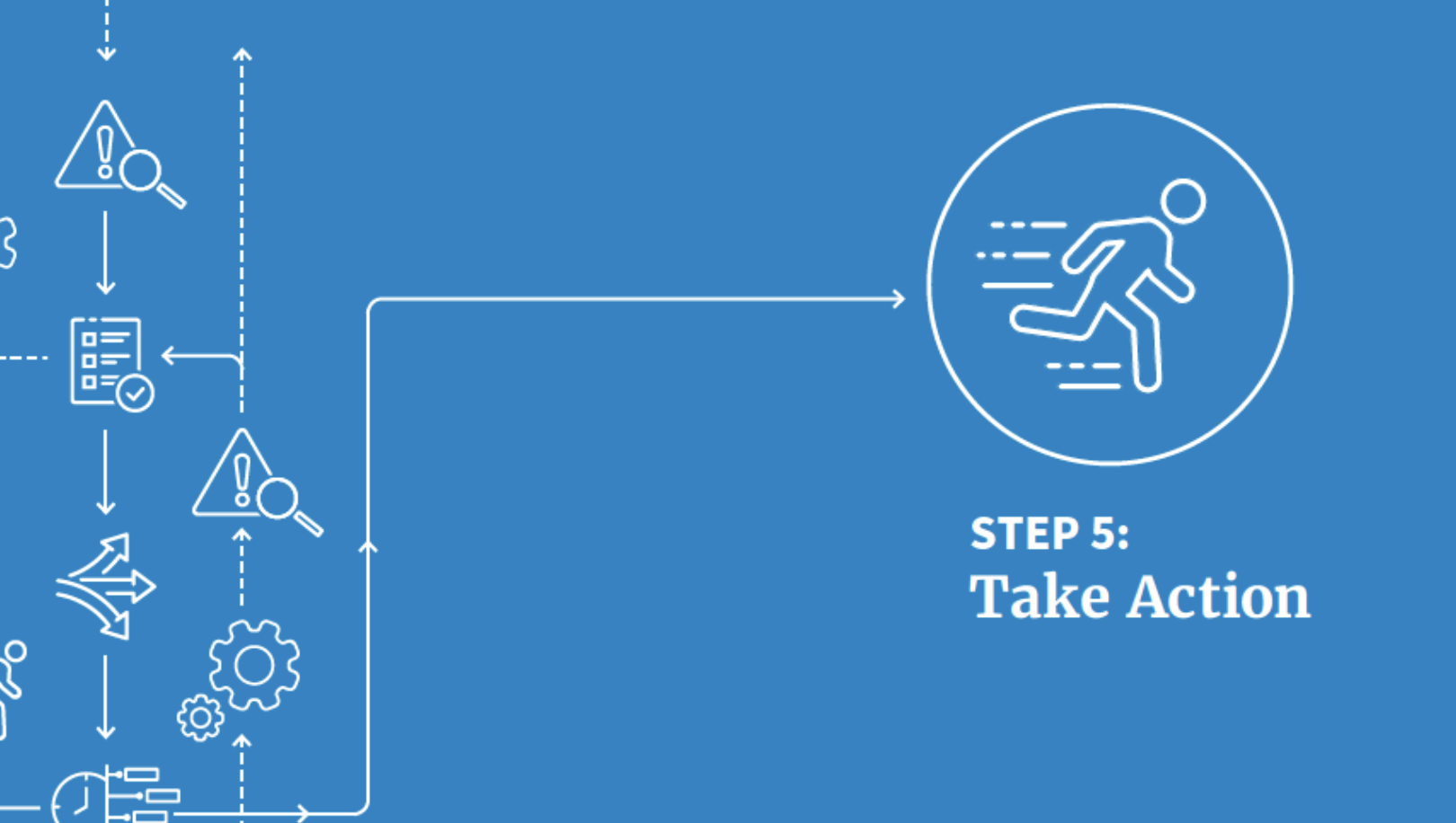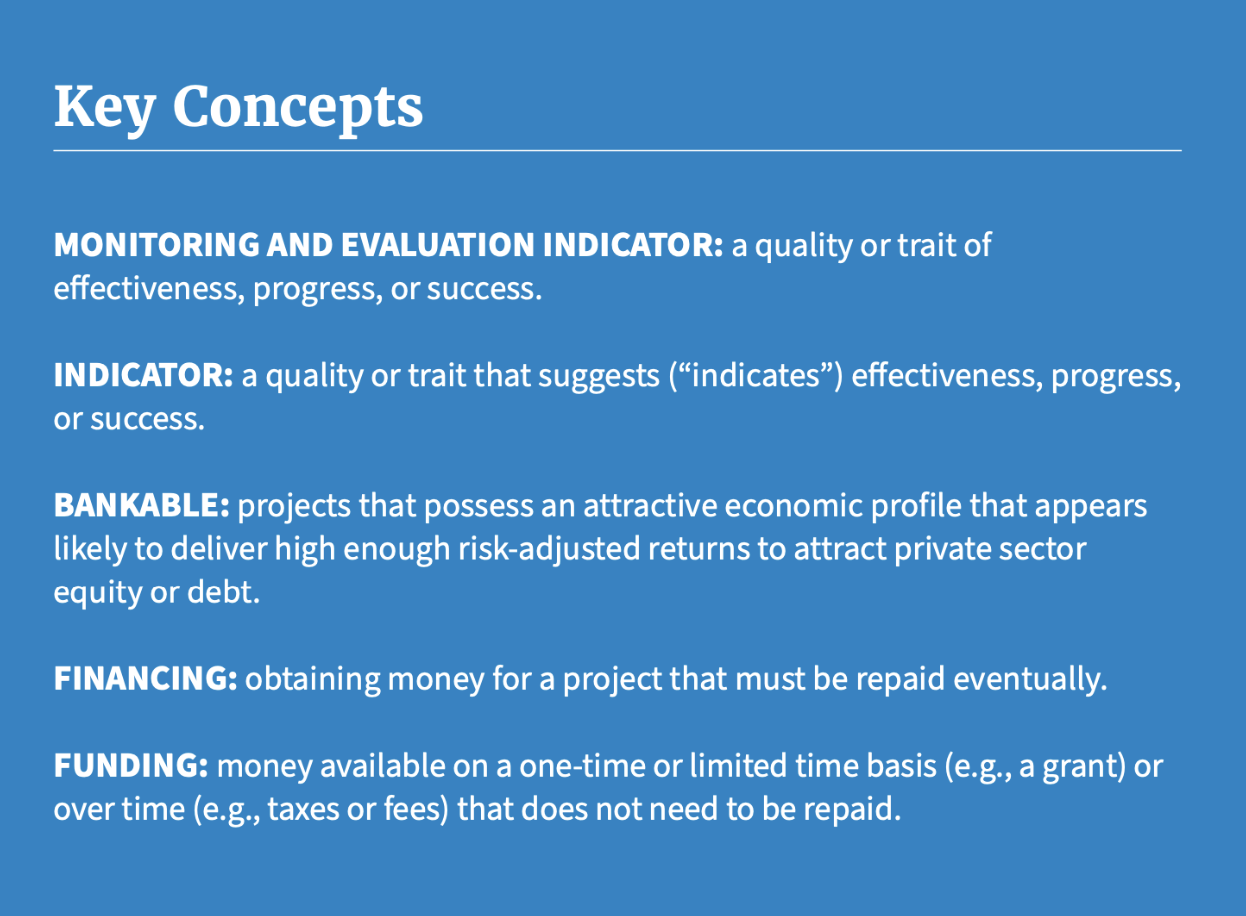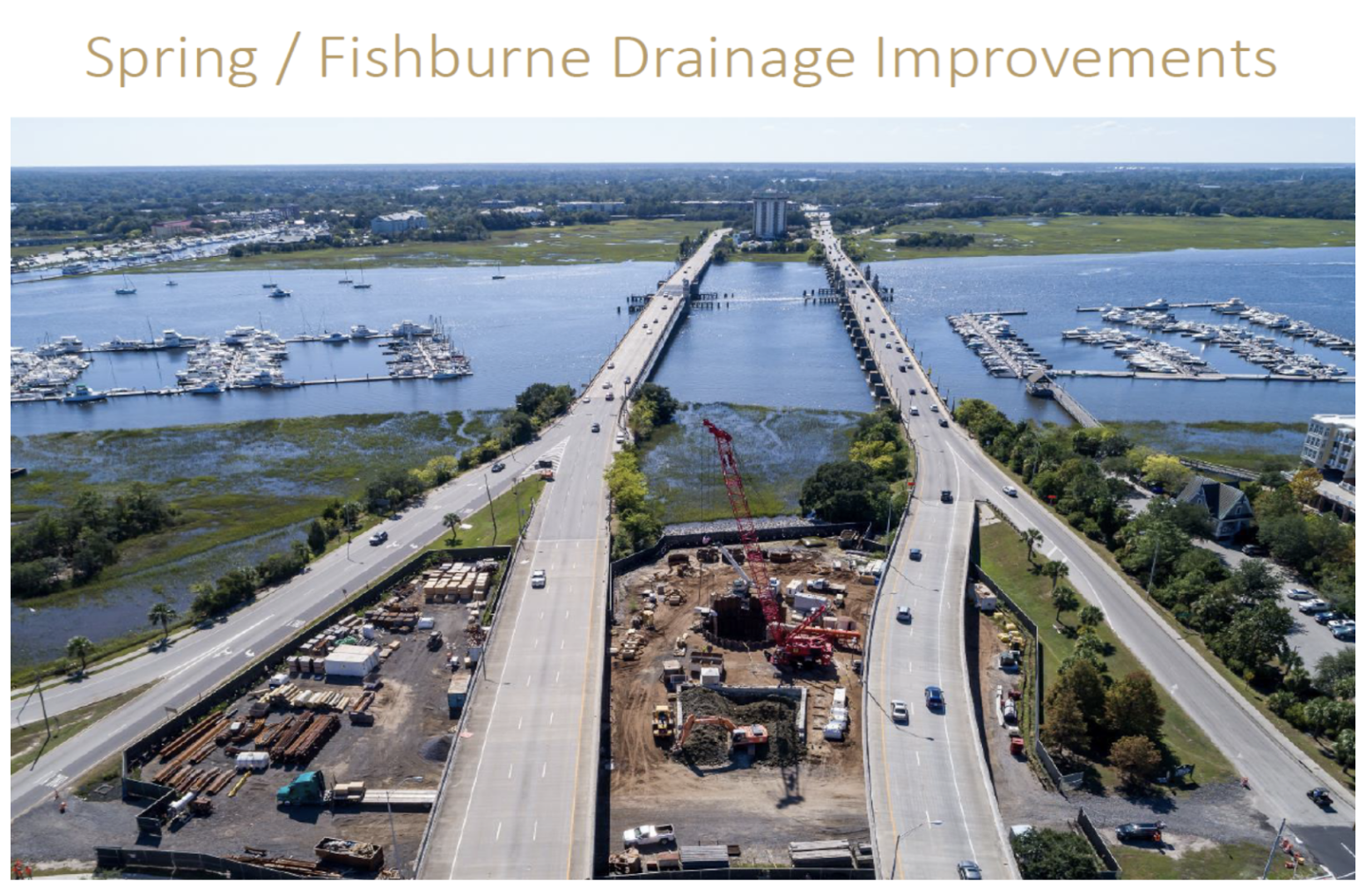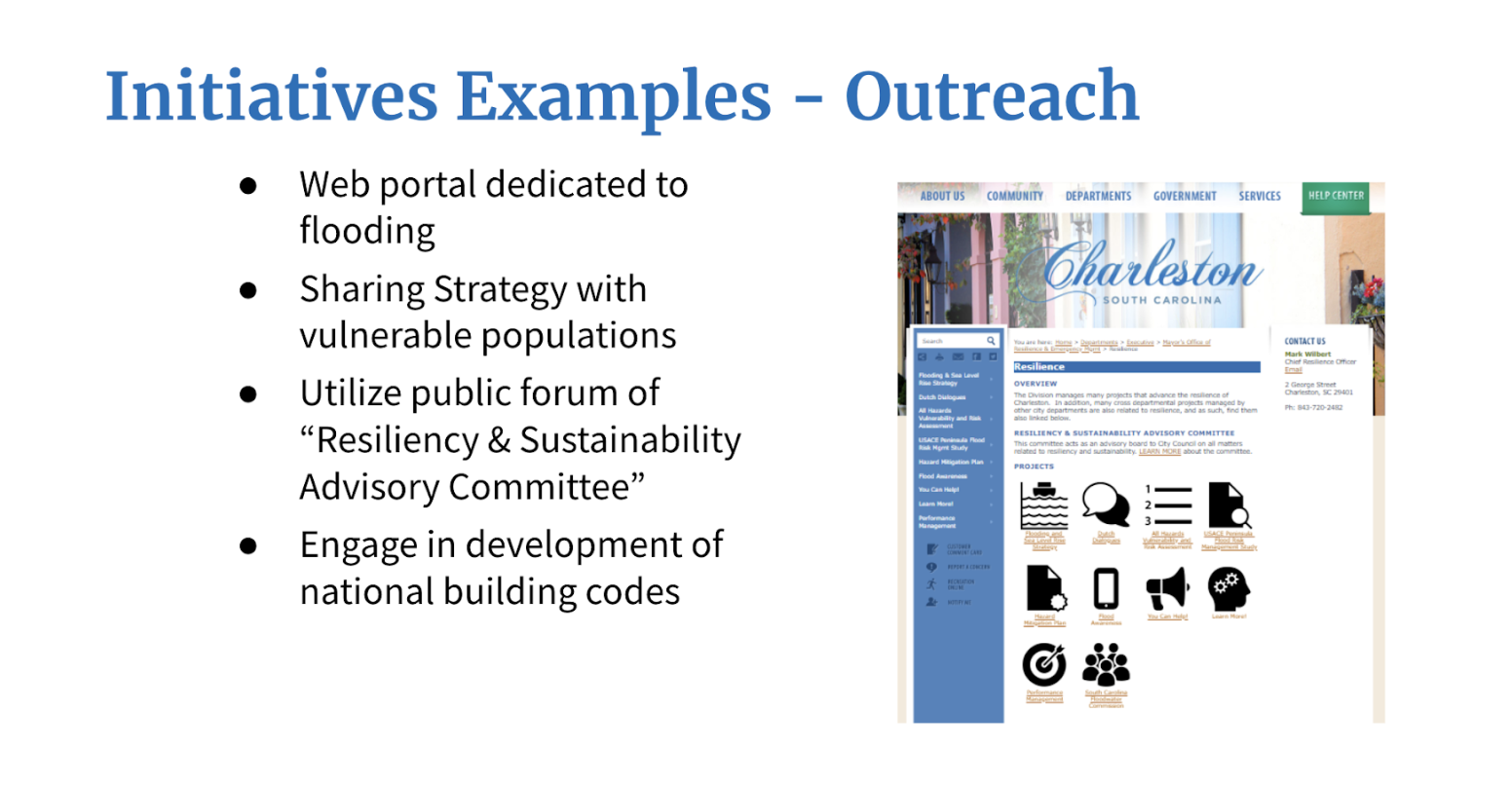Steps to Resilience Training Recap:Take Action

Session 6: Step 6, Take Action
Session 6 of the pilot training program focused on the final step of the Practitioner’s Guide, Step 5: Take Action. In this session, we discussed the process of implementing and communicating a resilience plan, which includes identifying funding sources, ongoing community engagement, monitoring, and iterating to measure progress and ensure the plan’s success.
A resilience plan necessitates long-term capacity building. In addition to the technical capacity for any construction or project management activities, ongoing community engagement is crucial for buy-in, support, and measuring progress. Those measures of progress will assist with ongoing funding and finance efforts.
It is also important to communicate project results with other communities who are engaged in similar efforts. Monitoring and evaluation are likewise essential for internal success and for building resilience capacity on a national level. By focusing on data collection strategies that improve project goals and implementation approaches, data collection will support iterative and persistent adaptation efforts.

Page 109, Practitioner’s Guide to the Steps to Resilience
Session 6 Learning Objectives
- Implement a Plan.
- Identify and seek opportunities for funding.
- Create a plan to monitor and share lessons learned.
- Iterate a plan for persistent adaptation.
During session six, a comprehensive overview of the Steps to Resilience was presented that highlighted key concepts from previous sessions and showcased the City of Charleston’s implementation of the framework over the past 10 years. The case study provided examples of the City’s actions, products, and results, while also discussing the lessons learned and the adaptation measures taken to respond to evolving indicators along the way.
The image below shows progress made for the U.S. 17 Spring / Fishburne Drainage Improvement Project which aims to reduce the duration, frequency and severity of flooding caused by moderate to heavy rainstorms along the Septima Clark Parkway and adjacent drainage basins.

The case study also highlighted the success of securing funding for various projects. The interactive follow up discussion facilitated by the Funding and Finance team provided valuable insights in the opportunities, complexities, and nuances associated with funding resilience projects.
Throughout the session, the importance of communicating the resilience plan to various stakeholder groups was emphasized, underscoring its crucial role in achieving successful implementation and public support for community resilience efforts. Below are examples of outreach activities that the City of Charleston participated in.

The Metrics and Evaluations team led a comprehensive discussion during the session. The team highlighted the importance of establishing clear goals and metrics, as well as implementing processes and procedures to regularly evaluate progress and make necessary adjustments.
In summary, session six offered participants the opportunity to dive into a real-world example of a community’s journey in following the Steps to Resilience framework by showcasing the various means and resources used to achieve each step. The session emphasized the importance of aligning resilience efforts with community values and goals, underlining the significance of a deliberate process that ensures that the community remains on track. This approach involves measuring, evaluating, and taking appropriate actions to maintain the desired trajectory and ensure the community’s long-term resilience objectives are met.
This concludes the Steps to Resilience Traning program series. If you’re interested in learning more we invite you to check out the Resilience Ecosystem Website or contact us for any questions that you may have.
Interested in learning more? Let's Talk